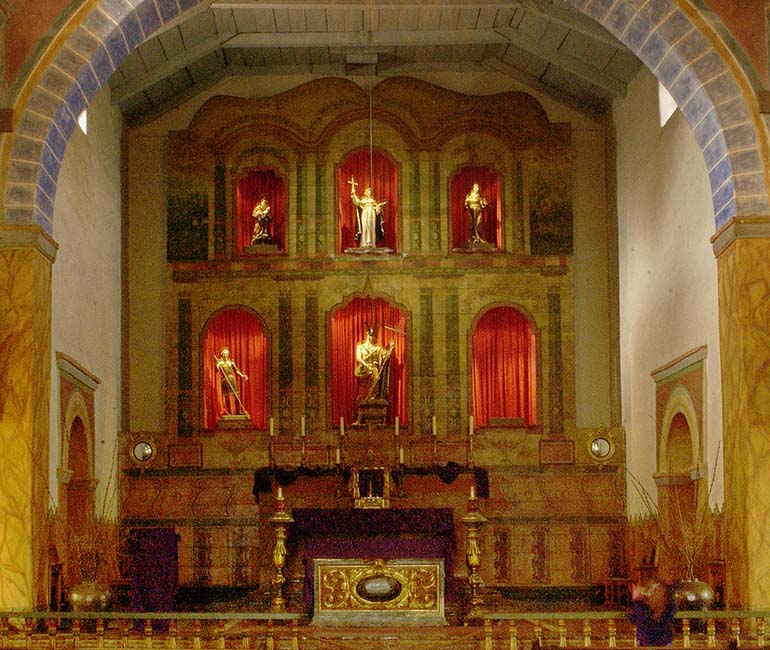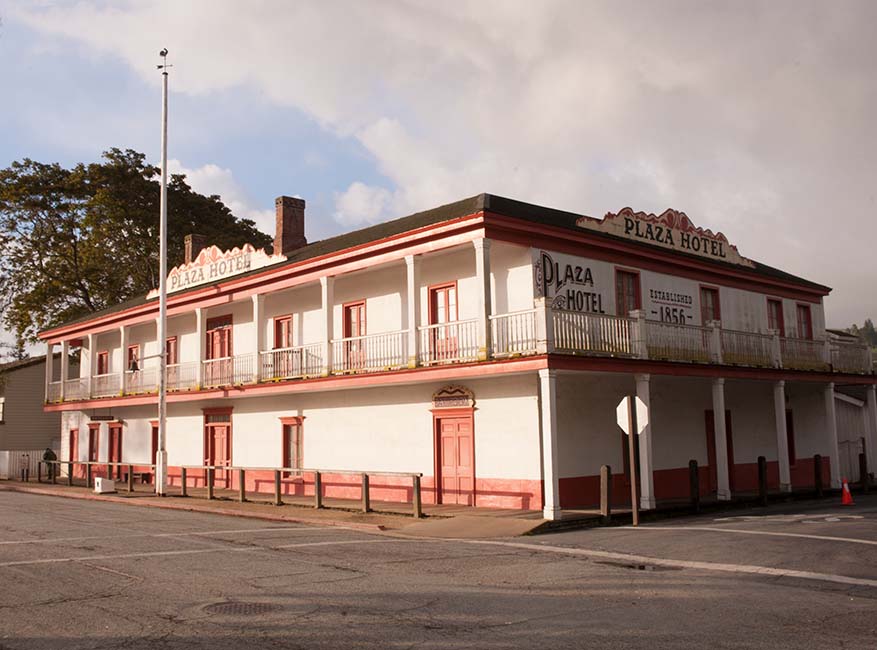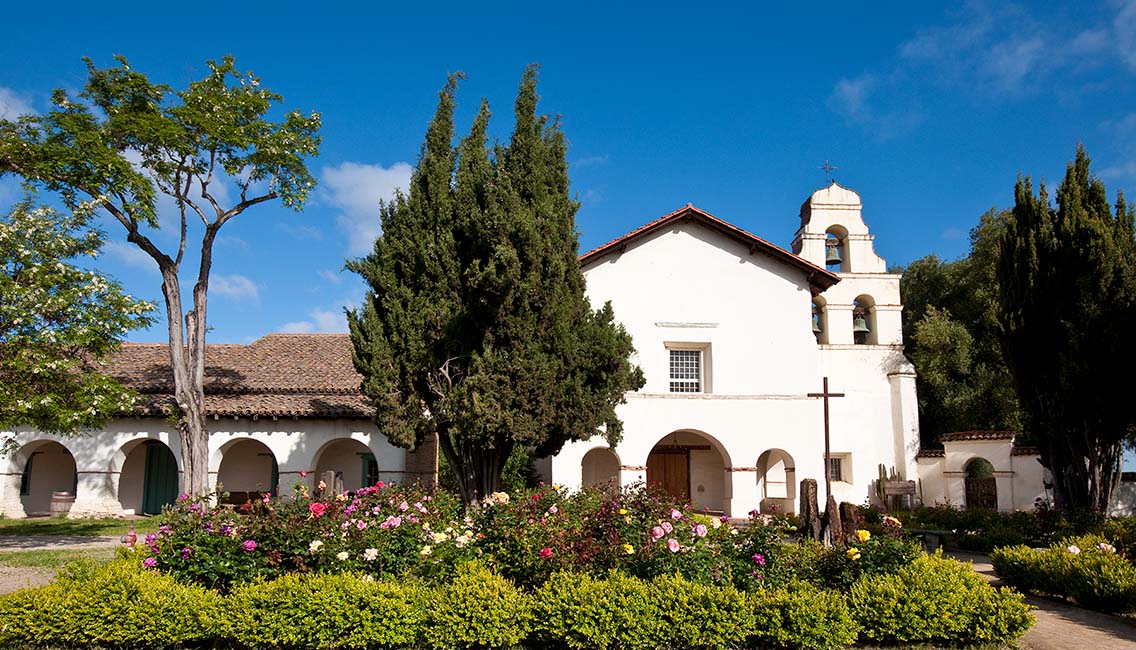Address
406 Second Street
Old Mission San Juan Bautista
San Juan Bautista, CA 95045
United States

Founded:
June 24, 1797 - The 15th California Mission
Also Called:
La Misión del Glorioso Precursor de Jesu Cristro, Nuestro Señor San Juan Bautista (The Mission of the Glorious Precursor of Jesus Christ, Our Lord San Juan Bautista)
Current Status:
An active Roman Catholic Church since 1797, now under the Roman Catholic Diocese of Monterey. The existing adobe church has seen continuous use since 1812.
Summary:
San Juan Bautista was founded on June 24, 1797. This mission sits on the edge of the only remaining Spanish Plaza in California. Mission San Juan Bautista’s historic church (built in 1812), well-landscaped grounds and setting, offer a unique opportunity to see and appreciate the California of two centuries ago.
406 Second Street
Old Mission San Juan Bautista
San Juan Bautista, CA 95045
United States
Reached from Highway 101 or Highway 5. Detailed directions are available on the mission website.
This historic and exceptionally well-restored mission sits on the edge of the only remaining Spanish Plaza left in California. Visitor entry is through a picturesque colonnade.

831-623-4528 - Gift Shop
831-623-2127 - Parish Office
Please contact the mission directly by telephone or by visiting the mission website for the most current information regarding tours and church services.
Due to Covid-19 restrictions, it is best to check for current information.
San Juan Bautista is a particularly popular wedding location and arrangements must be made at least six months in advance. As is the policy at all of the missions which are Catholic Churches, at least one member of the couple must be a baptized Catholic. Extensive marriage guidelines for San Juan Bautista are available on the mission website.
Guidelines for the Baptism sacrament can also be found on the mission website.
Many of the California missions (including San Juan Bautista) were sited so that the sun rays from the winter and summer solstice illuminated the interior of the church. For details, visit the Solstice Chronicles website. Dr. Ruben Mendoza's article "New Light on the California Missions" is an illuminating description of this special event.




The Town of San Juan Bautista offers the best opportunity to see and appreciate 19th century California. There are about thirty (30) historic buildings in the 12-block area surrounding the Plaza. These are part of the San Juan Bautista State Park. You will find lots of information about the park by visiting the CA Department of Parks and Recreation website.
This is a mission where you can spend more than several hours visiting the well-restored mission as well as the grounds and adjacent historic state park that offer additional "must see" attractions.



1835
1859, by U.S. President James Buchanan
St. John the Baptist

The mission was founded near the village of Popeloutchom in the land of the Mutsun tribelet of the Coastanoan people. Its location, at the crossroads of El Camino Real (Royal Road) and El Camino Viejo (Old Road) at Pacheco Pass, drew Yokuts to the mission in significant numbers in the 1820's.
The Amah Mutsun, descendants of the San Juaneros or mission neophytes, have engaged in a decades-long struggle for Federal recognition of their tribal status.
Located on the main plaza in the town that developed around the mission, about 90 miles southeast of San Francisco.
Traditional quadrangle. The mission vineyard was one mile southeast of the Church.

Ample water was channeled from El Rio de Pájaro to the mission and its orchards, vineyards, gardens and fulling mill (1818) via a system of zanjas or earthen canals. A deep pozo, or rock-lined well, was the primary source of drinking water.
Highest recorded population was 1,248 in 1823.
In 1832 the mission reported a livestock herd of 6,000 cattle, 6,004 sheep, 20 swine, 296 horses, and 13 mules on its various ranches. Some 50 head of cattle were slaughtered weekly in order to feed the mission community.

Total agricultural output between 1798 and 1832 was over 90,000 bushels of wheat, barley, corn, beans, and peas.
The present church was dedicated on June 23, 1812 and replaced the much smaller adobe chapel of 1979-1798 built by Ygnacio Barrera, Second Carpenter of the frigate Concepción.
In 1818 Anglo-American carpenter Felipe Santiago (Thomas Doak), the earliest American settler in California, painted (and very likely constructed) the main altar reredos after a design by Fr. Estévan Tapis.

The church did not include a bell tower in the mission era. Two bells were hung from a wooden bell rack.
A two-tiered companario with three bell openings was added during a 1976 restoration. One of the bells is original.
The 1818 main altar reredos (altar screen) and bultos (sculptures of saints) remain largely unrestored.
The church ambo or pulpit, which has a sounding board mounted overhead, was installed between 1812-1813.
In 1820 the church acquired the largest and most complete collection of apostolate paintings in the mission chain.

San Juan Bautista offers the best opportunity to see and appreciate the California of 160 years ago. The well-preserved mission founded on June 24, 1797 is picturesque. There are about 30 historic buildings in the 12-block area surrounding a Spanish Plaza (the only one remaining in California).
This Historical Image Gallery displays a number of drawings and paintings made of San Juan Bautista in 19th and early 20th centuries.
The Contemporary Image Gallery displays photographs of the mission taken during several visits by the Executive Director of the California Missions Resource Center.












